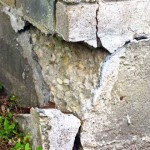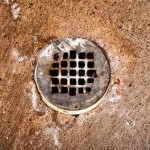How to Seal Basement Walls: A Comprehensive Guide
Keeping your basement dry and protected from water damage is crucial for maintaining a healthy and comfortable home environment. One of the most effective ways to achieve this is by sealing your basement walls. While the task may seem daunting, it can be broken down into manageable steps with the right preparation and materials.
In this comprehensive guide, we will walk you through the essential aspects of sealing basement walls. From identifying the potential water sources to applying the appropriate sealants, we will cover everything you need to know to seal your basement walls effectively.
1. Identifying the Water Source
Before you begin sealing your basement walls, it is essential to identify the source of the water. Common sources include:
- Foundation cracks: Cracks in the foundation can allow water to seep into the basement.
- Wall seepage: Water can seep through porous concrete or masonry walls.
- Joint leaks: Joints between walls and floors, as well as around pipes, can be points of water entry.
- Window leaks: Damaged or improperly sealed window frames can allow water to penetrate.
- Poor drainage: Downspouts and gutters that are not directed away from the foundation can cause water to pool around the house and seep into the basement.
Once you have identified the source of the water, you can proceed with the appropriate sealing measures.
2. Preparing the Surface
Before applying sealants, it is crucial to prepare the basement walls properly. This involves:
- Cleaning the walls: Remove any dirt, debris, or efflorescence from the walls using a wire brush or pressure washer.
- Patching holes and cracks: Repair any cracks or holes in the walls using hydraulic cement or a concrete patch.
- Smoothing the surface: Use a grinder or sander to smooth the patched areas and remove any bumps or unevenness.
3. Choosing the Right Sealant
There are various types of sealants available for basement walls, including:
- Hydraulic cement: This cement expands when it comes into contact with water, forming a watertight seal.
- Epoxy injection: Epoxy is injected into cracks to fill and seal them.
- Polyurethane sealants: These sealants form a flexible barrier that is resistant to water and moisture.
- Waterproofing membranes: These membranes are applied to the walls to create a waterproof barrier.
Choose the sealant that is best suited for the condition of your basement walls and the source of the water.
4. Applying the Sealant
Follow the manufacturer's instructions carefully when applying the sealant. Generally, it involves:
- Mixing the sealant: Mix the sealant according to the manufacturer's specifications.
- Applying the sealant: Use a brush, roller, or trowel to apply the sealant to the prepared surface.
- Curing the sealant: Allow the sealant to cure for the specified time to ensure a strong bond.
If you have any doubts about applying the sealant correctly, it is recommended to seek the assistance of a professional.
5. Finishing Touches
After applying the sealant, there are a few finishing touches you can add to enhance the effectiveness of the seal and improve the appearance of the basement walls:
- Painting: You can paint the sealed walls to give them a finished look and protect the sealant from UV damage.
- Installing a dehumidifier: A dehumidifier helps to control moisture levels in the basement, preventing condensation and reducing the risk of water damage.
- Checking and maintaining the seal: Regularly inspect the seal for any signs of damage or wear and repair it as needed.
Conclusion
Sealing basement walls is an effective way to protect your home from water damage and create a healthier and more comfortable living environment. By identifying the water source, preparing the surface, choosing the right sealant, applying it correctly, and adding finishing touches, you can effectively seal your basement walls and keep water out.
Remember, if you encounter any difficulties or have any concerns during the process, it is advisable to seek the advice of a qualified professional. With the right approach and materials, you can ensure that your basement walls are watertight and protected for years to come.

How To Waterproof Basement Walls From Inside Sani Tred

Waterproofing Basement Walls Dos And Don Ts To Remember Bob Vila

How To Waterproof Your Basement True Value

Sealing Basement Walls And Floors Hgtv

How Does Interior Basement Waterproofing Work

Dampproofing And Waterproofing For Foundation Walls Fine Homebuilding

Exterior Basement Waterproofing You Get A Free Estimate Wall Solutions By Olshan

How To Waterproof Basement Walls With Flex Seal Products Youtube

Diy Basement Waterproofing By Triad

Waterproofing Basement Walls Dos And Don Ts To Remember Bob Vila
Related Posts







